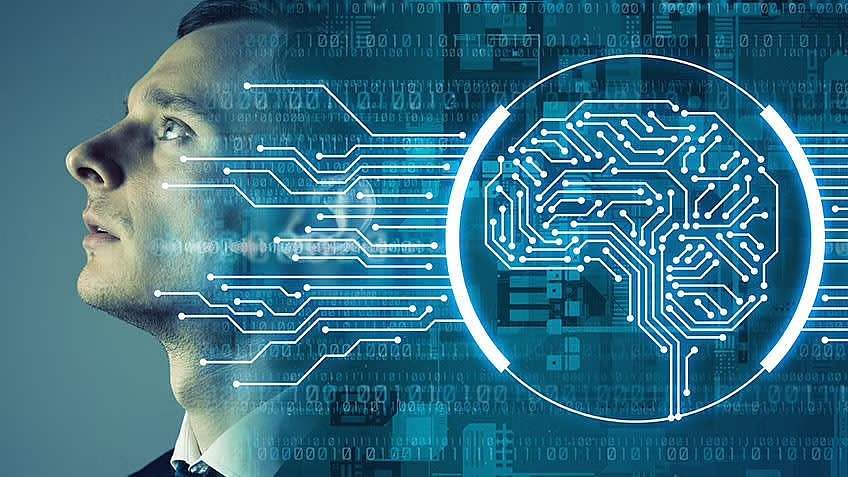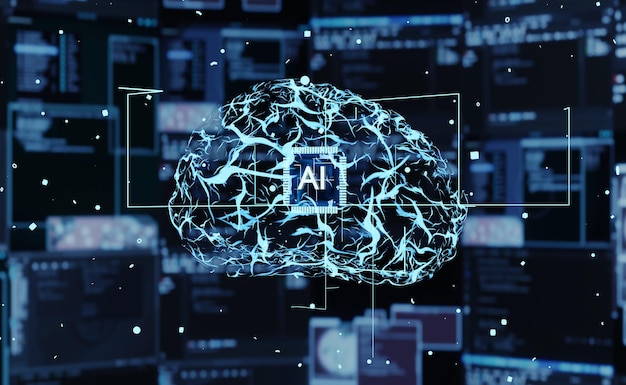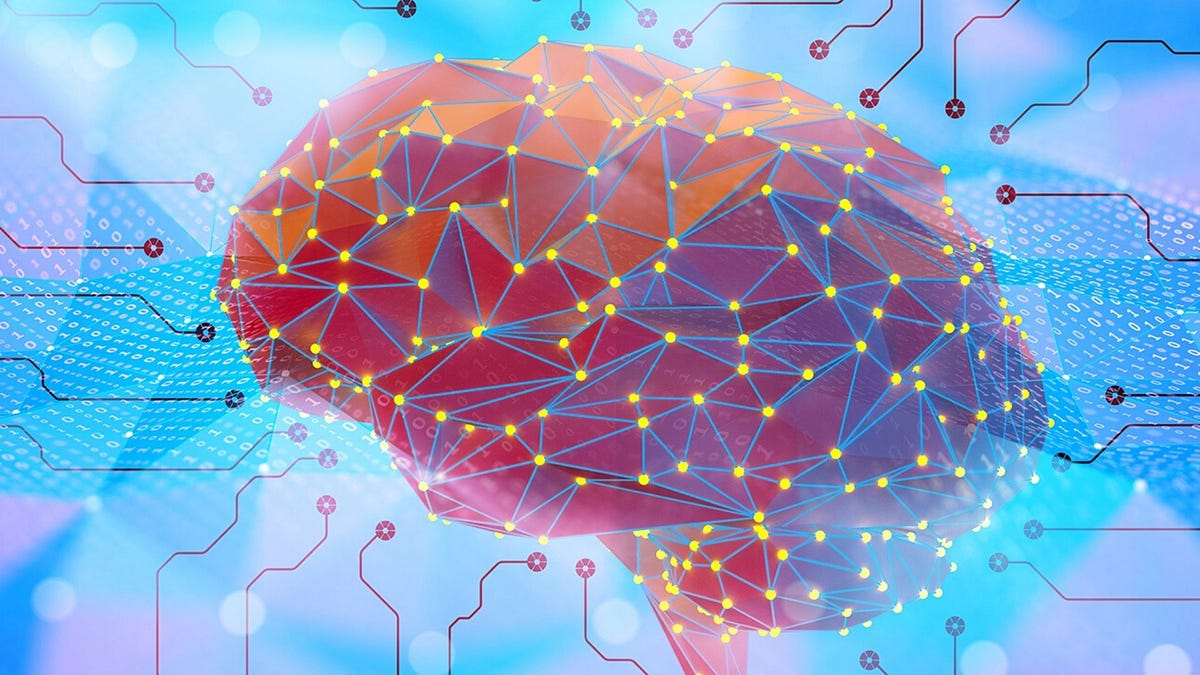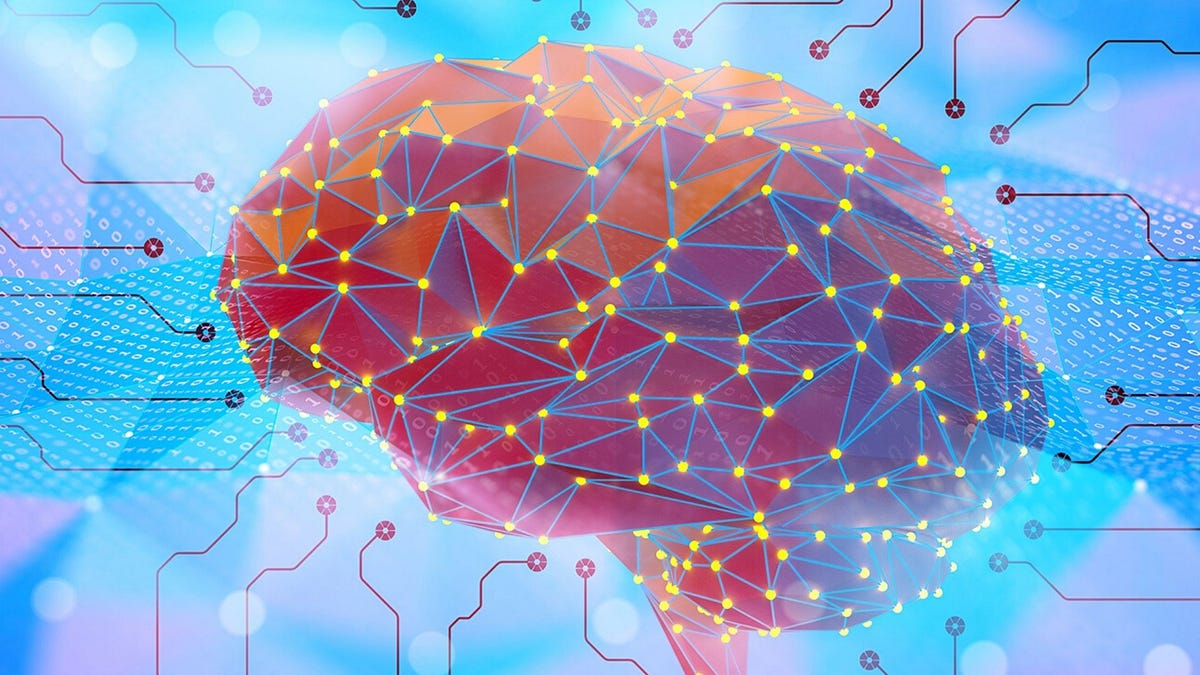The world of artificial intelligence stands at a fascinating crossroads, where two powerful paradigms compete and complement each other in unexpected ways. Symbolic AI, often called ‘good old-fashioned AI,’ relies on explicit rules and logical reasoning to solve problems, while Deep Learning harnesses vast amounts of data to discover patterns and make predictions. But which approach truly holds the key to advancing artificial intelligence?
Imagine trying to teach a child about the world in two different ways—either by giving them a detailed rulebook or by letting them learn through countless examples and experiences. This mirrors the fundamental difference between Symbolic AI’s rule-based approach and Deep Learning’s pattern-recognition capabilities. While Symbolic AI excels at tasks requiring clear logical reasoning and transparent decision-making, Deep Learning shines in handling complex, unstructured data like images and natural language.
The distinction becomes particularly intriguing when we consider real-world applications. A Symbolic AI system might excel at chess by following explicit strategic rules, much like a grandmaster’s handbook. In contrast, a Deep Learning system would learn chess by analyzing millions of games, developing an intuitive understanding that sometimes defies conventional wisdom. Yet neither approach alone has managed to fully replicate human-like intelligence.
This article will explore these two paradigms in depth, examining their strengths, limitations, and most importantly, how their integration through neuro-symbolic approaches might offer the best of both worlds. We’ll investigate specific cases where each technology proves invaluable and look at groundbreaking ways researchers are combining them to create more robust and interpretable AI systems.
Whether you’re a developer implementing AI solutions, a business leader evaluating AI technologies, or simply curious about the future of artificial intelligence, understanding these two fundamental approaches—and their potential convergence—is crucial for navigating the evolving landscape of AI.
Understanding Symbolic AI


Symbolic AI represents a foundational approach to artificial intelligence that mirrors how humans process information through logical reasoning. This methodology relies on explicit symbols and rules to represent and manipulate knowledge, much like how we use language and mathematics to express ideas and solve problems.
Think of Symbolic AI as a sophisticated system of if-then rules, similar to how a seasoned chef follows and adapts recipes. Just as a chef knows that if they’re making bread and the dough isn’t rising, then the yeast might be inactive or the temperature too low, Symbolic AI uses structured logical rules to make decisions and draw conclusions.
The power of Symbolic AI lies in its ability to work with high-level abstractions and clearly defined relationships. For example, in a medical expert system, knowledge might be encoded as logical rules like “if a patient has specific symptoms and test results, then consider certain diagnoses.” This approach mirrors how human doctors apply their medical training and experience to diagnose patients.
| Condition | Action | Explanation |
|---|---|---|
| IF patient has a fever AND patient has a cough AND patient has difficulty breathing | THEN patient may have pneumonia | Medical diagnosis based on symptoms |
| IF temperature is above 75°F AND humidity is above 65% | THEN it feels uncomfortable | Climate comfort assessment |
| IF a person has a telephone | THEN they still have it after looking up a number in the telephone book | Assumption maintenance in dynamic domains |
Expert systems, one of the most successful applications of Symbolic AI, have proven particularly valuable in specialized domains. These systems, as documented in recent research, leverage structured knowledge bases to emulate human expert decision-making in fields ranging from medical diagnosis to financial planning.
A key advantage of Symbolic AI is its transparency and explainability. Unlike black-box neural networks, symbolic systems can provide clear reasoning paths for their conclusions. When a symbolic system makes a recommendation or decision, it can explain exactly which rules and logical steps led to that outcome, much like how a mathematics teacher can show every step in solving an equation.
However, Symbolic AI also faces certain limitations. Just as humans sometimes struggle to articulate exactly how they recognize a friend’s face or interpret tone of voice, Symbolic AI can have difficulty with tasks that require pattern recognition or dealing with ambiguous, real-world situations where rules aren’t clearly defined.
Deep Learning: An Overview
Deep learning represents a significant advancement in artificial intelligence, powered by sophisticated neural networks that process information similarly to the human brain. Like how we learn to recognize faces or voices through repeated exposure, these artificial neural networks analyze vast quantities of data to discover patterns and relationships without being explicitly programmed for each task.
At its core, deep learning eliminates the need for humans to manually program rules and instead allows systems to learn directly from examples. Consider facial recognition: rather than writing complex rules about eye spacing or nose shapes, a deep learning system learns to recognize faces by analyzing millions of facial images, gradually building an understanding of the features that make each face unique.
The ‘deep’ in deep learning refers to the multiple processing layers that work together to extract increasingly sophisticated features from raw data. According to IBM researchers, these neural networks can contain dozens or even hundreds of layers, each building upon the insights of previous layers to form a rich understanding of complex patterns.
The technology’s impact has been particularly transformative in fields requiring sophisticated pattern recognition. In healthcare, deep learning systems now assist radiologists in detecting subtle anomalies in medical images. In autonomous vehicles, these systems process visual data in real-time to identify objects, pedestrians, and road conditions. Even our everyday interactions with smartphones have been enhanced through deep learning-powered voice recognition and language translation.
Remarkably, deep learning systems continue to improve as they encounter more data. Unlike traditional software that remains static after deployment, these neural networks can adapt and refine their understanding over time, becoming increasingly accurate and sophisticated in their pattern recognition capabilities. This self-improving quality has made deep learning an invaluable tool across industries, from financial fraud detection to climate change modeling.
Key Differences Between Symbolic AI and Deep Learning
Symbolic AI and deep learning represent two fundamentally different approaches to artificial intelligence, each with distinct characteristics in how they process information and learn. Symbolic AI, often called “good old-fashioned AI,” operates like a meticulous librarian, carefully organizing and applying explicit rules to solve problems.
Deep learning, in contrast, functions more like a pattern-recognition specialist, discovering relationships in vast amounts of data without being explicitly programmed. While symbolic AI relies on human-designed rules and logical operations, similar to how we might solve a math problem step by step, deep learning models learn from experience, much like how a child learns to recognize cats after seeing many examples.
The knowledge representation methods of these approaches couldn’t be more different. Symbolic AI uses clear, interpretable symbols and rules that humans can easily understand. For example, a symbolic AI system might use the rule “IF temperature is above 75°F AND humidity is above 65% THEN it feels uncomfortable.” This transparency makes it particularly valuable in fields like medical diagnosis or legal reasoning, where understanding the decision-making process is crucial.
The shortcomings of deep learning align with the strengths of symbolic AI, which suggests the time is right for a reconciliation.
Science Direct Journal
Deep learning’s approach to knowledge representation is less transparent but more flexible. These systems encode information in vast networks of interconnected artificial neurons, each contributing to the final output in subtle ways. This makes them excellent at handling nuanced patterns in data, particularly in areas like image recognition or natural language processing, where rigid rules often fall short.
The learning mechanisms also differ significantly. Symbolic AI requires human experts to manually encode knowledge and rules, making it precise but labor-intensive to maintain and update. Deep learning systems, however, can automatically learn from examples, adapting their internal representations as they encounter new data. This adaptability comes at the cost of requiring large amounts of training data and computational resources.
Recent developments suggest that the future might lie in combining these approaches. Neuro-symbolic AI stands at the frontier of machine learning by integrating the interpretability of symbolic reasoning with the adaptive learning capabilities of deep neural networks. This hybrid approach could potentially offer the best of both worlds: the explicit reasoning of symbolic AI with the pattern recognition prowess of deep learning.
Understanding these fundamental differences helps developers and organizations choose the right approach for their specific needs. While symbolic AI excels in scenarios requiring explicit reasoning and transparency, deep learning shines in handling complex patterns and unstructured data. The choice between them—or their combination—depends entirely on the specific requirements of the task at hand.
Applications of Symbolic AI
Symbolic AI serves as a powerful tool across industries where clear reasoning and transparency are paramount. This rule-based approach to artificial intelligence excels in situations where decisions need to be explicitly understood and verified.
Within healthcare, Symbolic AI enhances medical diagnosis by processing patient symptoms through carefully crafted decision trees and rule sets. For instance, when a doctor inputs various symptoms and test results, the system can systematically evaluate possible conditions based on established medical knowledge, providing a clear trail of reasoning for each suggested diagnosis. This transparency allows healthcare professionals to verify the AI’s logic and make more informed decisions about patient care.
The legal sector has embraced Symbolic AI for its ability to navigate complex regulatory frameworks and case law. Legal professionals use these systems for contract analysis and compliance monitoring, where the AI can systematically check documents against established legal requirements while providing clear explanations for any identified issues or concerns.
Financial institutions leverage Symbolic AI’s rule-based approach for risk assessment and regulatory compliance. When evaluating loan applications or detecting fraudulent transactions, these systems apply predetermined criteria and logical rules, making their decisions easily interpretable for both financial professionals and auditors. This transparency is crucial in an industry where accountability and clear decision-making processes are essential.
What makes Symbolic AI particularly valuable in these fields is its ability to explain its reasoning process step by step. Unlike black-box AI systems, Symbolic AI can show exactly how it arrived at a conclusion, following a chain of logical rules that humans can understand and verify. This explainability builds trust and ensures that professionals can confidently rely on AI assistance while maintaining control over critical decisions.
Unlike traditional legal AI systems constrained by keyword searches and static-rule applications, symbolic AI adopts a more nuanced and sophisticated approach. It integrates the robust data processing powers of deep learning with the precise logical structures of symbolic AI, laying the groundwork for devising legal strategies that are both insightful and systematically sound.
Weber Shandwick Futures
The adoption of Symbolic AI continues to grow in regulated industries where decisions must be justified and documented. By providing a clear audit trail of reasoning, these systems help organizations maintain compliance while improving efficiency and accuracy in their decision-making processes.
Deep Learning in Modern AI


Brain and data visualizations symbolizing AI learning – Via freepik.com
Deep learning has transformed artificial intelligence by enabling machines to learn complex patterns from extensive datasets, similar to human neural networks. Unlike traditional programming, deep learning systems can automatically discover hidden patterns and relationships within data.
Virtual assistants like Siri or Alexa use deep learning algorithms to process and understand human speech, improving accuracy through exposure to millions of voice conversations. These systems can now comprehend context, detect emotions in speech, and adapt to user preferences over time.
The technology has been transformative in autonomous vehicles, where deep neural networks process input from multiple sensors to make split-second driving decisions. These systems continuously learn from real-world driving data, becoming adept at identifying pedestrians, reading road signs, and navigating complex traffic scenarios in various weather conditions.
Modern recommendation systems are another powerful application of deep learning. Whether shopping online, streaming music, or browsing social media, these systems analyze vast amounts of user behavior data to predict preferences with remarkable accuracy. The more data they process, the better they suggest content aligned with user interests.
Deep learning’s effectiveness stems from its ability to identify intricate patterns in large, complex datasets that would be impossible for humans to detect manually. In medical imaging, these systems can now spot subtle indicators of disease that might escape even experienced physicians, having learned from millions of medical images.
Challenges and Limitations
The field of artificial intelligence faces significant hurdles as both symbolic AI and deep learning architectures reveal their distinct limitations. Symbolic AI systems, while excellent at reasoning with explicit rules, struggle to adapt and learn from new scenarios without human intervention. These systems require manual encoding of knowledge, making it difficult to handle unforeseen situations or evolve with changing environments.
Deep learning models present their own set of challenges. Researchers at prominent institutions highlight that these neural networks operate as “black boxes,” making their decision-making processes largely opaque. This lack of transparency poses serious concerns, especially in critical applications where understanding the reasoning behind AI decisions is crucial.
The interpretability issue becomes particularly evident when deep learning systems make unexpected decisions. Without clear insight into how these models arrive at their conclusions, it becomes challenging for developers and users to trust their outputs or identify potential biases in their reasoning processes.
Moreover, deep learning systems demand massive amounts of labeled training data to achieve acceptable performance levels. This dependency on large datasets creates practical limitations for many real-world applications where such extensive data collection may be unfeasible or prohibitively expensive.
Researchers are increasingly turning to hybrid approaches that combine symbolic reasoning with deep learning capabilities. This integration aims to harness the strengths of both paradigms – the interpretability and logical reasoning of symbolic systems with the pattern recognition and adaptability of deep learning networks.
The future lies in combining deep learning’s pattern recognition capabilities with symbolic AI’s logical reasoning to create more robust and interpretable systems.
While promising, these hybrid approaches face their own integration challenges, including the need to develop seamless interfaces between symbolic and neural components. However, they represent a promising direction toward more capable and trustworthy AI systems that can both learn effectively and explain their reasoning process.
Combining Symbolic AI and Deep Learning


Brain interwoven with circuitry symbolizing AI integration. – Via smythos.com
Modern artificial intelligence faces a compelling inflection point as researchers merge the precision of symbolic reasoning with the adaptability of deep learning. This fusion, known as neuro-symbolic AI, represents a significant leap forward in creating more capable and interpretable AI systems. By combining the structured logic of symbolic AI with neural networks’ pattern recognition abilities, this hybrid approach aims to overcome the limitations of each method when used alone.
At its core, symbolic AI excels at explicit reasoning using predefined rules and logic, much like how humans employ structured thinking to solve complex problems. Meanwhile, deep learning networks demonstrate remarkable capabilities in learning patterns from large datasets, but often operate as “black boxes” with unclear decision-making processes. The integration of these approaches creates systems that can both learn from data and reason logically about their decisions.
A key advantage of this combined approach lies in its enhanced interpretability. While traditional deep learning models might arrive at accurate predictions without clear explanations, neuro-symbolic systems can provide logical reasoning chains for their outputs. As noted in a comprehensive survey by Neural Computing and Applications, this interpretability becomes crucial in high-stakes applications like healthcare and autonomous systems.
The practical benefits of neuro-symbolic AI extend beyond interpretability. These systems can learn from smaller datasets since they incorporate prior knowledge through symbolic rules. This capability proves particularly valuable in domains where large training datasets are unavailable or impractical to obtain. Additionally, they demonstrate improved generalization abilities, applying learned concepts to new situations more effectively than pure neural network approaches.
| Aspect | Symbolic AI | Deep Learning | Neuro-Symbolic AI |
|---|---|---|---|
| Core Principle | Rule-based logic and explicit reasoning | Pattern recognition from large datasets | Combines rule-based logic with pattern recognition |
| Transparency | High (clear reasoning paths) | Low (black-box nature) | High (provides logical reasoning chains) |
| Data Requirements | Low (relies on predefined rules) | High (requires large datasets) | Moderate (incorporates prior knowledge, requires less data) |
| Adaptability | Low (needs manual updates) | High (learns from new data) | High (learns and reasons logically) |
| Application Domains | Medical diagnosis, legal reasoning, financial compliance | Image recognition, natural language processing, autonomous vehicles | Healthcare, autonomous systems, complex problem-solving |
Consider an autonomous driving system utilizing neuro-symbolic AI. While the neural network component processes raw sensor data to identify objects and road conditions, the symbolic reasoning layer applies traffic rules and safety protocols to make informed decisions. This dual approach ensures both accurate perception and logical decision-making, creating a more reliable and trustworthy system.
Future Directions in AI


Visualizing AI through neural-symbolic systems. – Via medium.com
The evolution of artificial intelligence is increasingly promising with the convergence of diverse AI approaches, particularly in neuro-symbolic AI. This hybrid method merges the robust pattern recognition of neural networks with the precise reasoning of symbolic systems, representing a significant advancement towards more interpretable and reliable AI systems.
Recent research from leading institutions demonstrates how neuro-symbolic AI can enhance explainability and learning efficiency while reducing dependence on massive datasets. By integrating neural methods for complex feature extraction with symbolic approaches that incorporate established physical world models, these systems show improved robustness under unstructured conditions.
The future of AI development will likely focus on bridging the gap between data-driven learning and rule-based reasoning. This integration aims to create AI systems that process information efficiently and provide clear explanations for their decision-making processes, crucial for deployment in sensitive areas like healthcare and autonomous systems.
Looking ahead, the field faces challenges such as developing scalable frameworks that effectively combine traditional logic programming with neural networks. Success here could lead to AI systems demonstrating both the adaptability of machine learning and the reliability of symbolic reasoning, bringing us closer to AI that can truly augment human cognitive capabilities.
Despite significant hurdles in achieving seamless integration between different AI paradigms, the advancement of neuro-symbolic approaches offers a compelling roadmap for the future. As these technologies mature, we can expect AI systems that are not just more powerful, but also more trustworthy and easier to understand.
